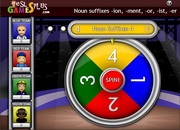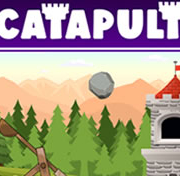Physical and Chemical Properties, Science Game
What is the difference between the physical and chemical properties of matter? Physical properties such as color, density, hardness, and boiling points are characteristics of matter that can be observed or measured easily. The chemical properties of a substance on the other hand refer to its ability to change into something else. For instance, wood can catch fire and turn to ash. Want to learn more about the differences? Play this science game to practice the differences between the physical and chemical properties of substances.
Navigating the World of Physical vs Chemical Property
When exploring the fascinating realm of science, particularly the study of matter, students often encounter the terms ""physical properties"" and ""chemical properties."" Understanding the distinction between these two types of properties is foundational to the study of science, and what's even more exciting is that we witness examples of these properties in our daily life. So, let's dive deep into the world of physical vs chemical property and learn through playful interaction.
Physical Properties: More Than Meets the Eye
Physical properties can be described as the characteristics of a substance that can be observed without changing the substance's identity. These are the attributes you can see, touch, or measure without making a new substance. Examples include:
Color
Mass
Volume
Density
Boiling point
Melting point
For instance, water can be frozen to make ice or heated to produce steam, but in all these states, it remains H2O.
Chemical Properties: When Substances Transform
Chemical properties, on the other hand, describe how a substance changes into a new substance. This involves a chemical reaction, and the original substance no longer exists. Examples of chemical properties include:
Reactivity with other chemicals
Toxicity
Combustibility or flammability
Oxidation
For example, when paper burns, it becomes ash, smoke, and gases. The original paper is no longer present, showcasing its chemical properties.
Making Learning Interactive with Games
Learning about physical vs chemical property through traditional methods can sometimes be abstract and challenging for kids. However, interactive games provide an engaging platform for understanding these crucial concepts.
Physical and Chemical Properties Science Game is a captivating game where children can test their knowledge on the properties of matter. Through this interactive platform, kids can:
Differentiate between physical and chemical properties
Apply their understanding in real-world scenarios
Get instant feedback to gauge their progress
And for those who have an insatiable thirst for knowledge, ESL Games Plus has an array of science games that make learning an adventurous journey.
Why Integrate Games into Learning?
Increased Retention: Interactive platforms enhance memory retention by making learning enjoyable and less monotonous.
Real-world Application: Through scenarios and examples, kids can see the application of what they're learning.
Personalized Pace: Everyone learns differently. With games, students can move at their pace, ensuring comprehensive understanding.
Charting the Course of Scientific Exploration
Understanding the distinction between physical vs chemical property is a stepping stone in the vast world of science. As budding scientists embark on this journey, interactive platforms like games make the exploration both fun and educational. So, are you ready to dive into this captivating world? Adventure awaits!"









